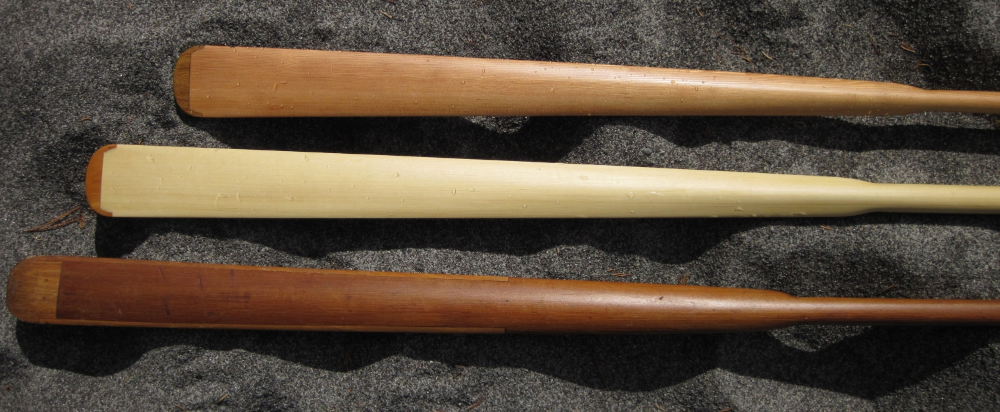Winter Paddles Update
/Oh sweet rain!
We've had one heck of a wet winter, the likes of which we haven't seen for several years. El Nino ("Spanish for.... THE NINO", Chris Farley) has certainly exaggerated our seasons. Summer was unusually hot and dry, but the heat and long days allowed "boat soup" finish to dry quickly, greatly speeding up the process of building Greenland paddles. I took the opportunity to experiment with new wood combinations and refinements to the shape, and I am very pleased with the results. After months of testing, I can announce with pride the newest evolution of my paddles:
NEW SHAPE
The reality is, the shape of my paddles (and kayaks) are always changing. Sometimes quickly, but usually slowly, almost imperceptibly. Its the nature of the process of building them one at a time; the final shape is determined by feel, by eye, and by testing. The newest iteration of paddles are closer to a shape that has been published on the internet for several years, and less like the more rounded shapes I had been exploring. The differences can be subtle to the eye, yet significant in feel.
In relation to my previous paddles, newer ones have these essential changes to shape:
1. A more pronounced "diamond" shape to the grip at the base of the blade, which improves its self-indexing qualities on the forward stroke. This is especially useful when you're tired. See the middle paddle above. (The actual LOOM is still the same rounded rectangle)
2. Edge angles are less acute.
3. More rounded tip profile.
4. The most elegant change is difficult for me to describe. Put simply, there is less "meat" on the blade from about halfway to the tip. Done right, it results in less weight and a "flex profile" that I prefer. This flex is even along the blade, like a good wooden bow. The goal is to distribute the load evenly, increasing strength by avoiding a point-load, and the paddler appreciates the lively feel and ease on the joints.
left to right: Western redcedar, Alaska-cedar, and Douglas-fir
NEW WOODS
I've become known for western redcedar paddles reinforced with black locust tips. I'm now adding Douglas-fir and Alaska-cedar to the lineup, again with black locust reinforcement, and when I can get it, Osage orange in place of the locust.
Western redcedar (WRC) is light and strong enough. The lightest paddles are usually WRC, and it has a reputation for being the best wood for Greenland paddles. (But I don't always agree with that!)
Douglas-Fir and Alaska-cedar are slightly heavier and much stronger than WRC. This allows a stronger paddle, or a smaller paddle for a small-handed paddler that wouldn't work in WRC because it would be too flexible and weak. The tips can also be thinned more than WRC, resulting in a very nice strong paddle with a unique balance. (My new favorite personal paddle happens to be Alaska-cedar with Osage orange tips.) Doug-fir and Alaska-cedar have pretty much the same properties for paddles. Choose the look you want.
Black Locust is excellent for paddle armor, tough and ornery.
Osage orange, theoretically, has ideal properties for paddle armor, surpassing black locust for its cohesiveness and stability. If I could find a steady supply of suitable stock, I would push it harder. As it stands, I can only use it when I happen to find a good piece.
ALL of the woods I use have a long and illustrious history in the wood shipbuilding and boatbuilding industry, and ALL the woods I use are native to North America.
Again, western redcedar, Alaska-cedar, and Douglas-Fir. Alaska-cedar will always look like this, and so will Douglas-fir, for the most part. However, western redcedar has great color variation, from blonde to dark brown.
Below is a 1/4 inch thick piece of Osage orange that I tested for splitting resistance. Impressive. Those of you who've had the unfortunate experience of splitting elm might recognize this.





